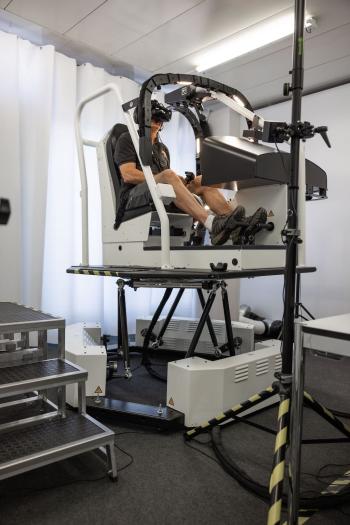
In Part 2, we discussed mountain flying and training for mechanical malfunctions in the VRM Switzerland FTD.
With 4,000 H125s flying around the world, the goal for this flight training device (FTD) is to become not only a tool for recurrent training but also for qualification type training. Both companies will cooperate to deploy the device worldwide and identify new areas of development for other helicopters and missions. One of this author’s prime suggestions would be the dynamic and complex environment of aerial firefighting.
“Today, with FTD Level 3 EASA qualification, a new step has been reached, with simulator hours that will bring credits in training. Such an innovative means will bring so many benefits to our customers by enhancing safety, affordability and flexibility,” says Sabrina Barbera, head of training and flight operations at Airbus.
VRM Switzerland and Airbus Helicopters signed a commercial partnership agreement during the 2022 Heli Expo in Dallas.
Helitrans, Norway’s largest domestic helicopter operator, is the first company worldwide to operate a qualified Virtual Reality FTD Level 3. An operator can train for high-risk scenarios without endangering an actual aircraft and crew. The device is cost and time efficient for providing training and checks, and it provides realism, size and affordability at a fraction of the cost of a traditional simulator. Additionally, an operator won’t put expensive cycles on a helicopter engine or flight hours on time-limited parts, or worry about the fuel budget. Helitrans already has invested in two VRM Switzerland training devices that will be set up as part of a new independent flight school providing training for its pilots as well as for other Scandinavian helicopter operators.
Direct and Positive Transfer of Learning
The VRM system allows pilots to practice routine, abnormal and emergency procedures efficiently, especially the critical maneuvers of hovering, approaches, slope operations, confined area operations and instrument flying. The effectiveness of the VRM system for initial pilot certification was recently proven with students earning their private pilot helicopter certificates with 45 hr. of actual helicopter time, whereas the industry average is an average of 60 hr. This is a considerable reduction in the total cost of training.
No time is squandered on fueling, warm-ups and flight time in transit to training areas, which also reduces the cost of training. The option to reposition the system also saves valuable training time and cost.
Repetitive practice of these difficult maneuvers equates to instilling muscle memory and reflexes. Trainees can repeat maneuvers like autorotations without the interruption of fitting into the traffic pattern flow, or interrupting others in the traffic pattern. This reduces air traffic in busy traffic patterns and minimizes the midair collision risk.
This FTD allows the pilot to train for emergency situations in a safe and highly realistic environment, often not possible to perform in an actual aircraft, while saving money for training and training to a higher proficiency. Additionally, students will not experience scheduling interruptions in training due to inclement weather, airspace restrictions or broken rotorcraft. Nor would a student experience training disruptions due to other aircraft in the flight pattern. Also, a student can train for day or night conditions, regardless of the lighting outdoors.
An Effective Solution Is Now Here
Since the beginning of rotary-wing aviation there has been an overwhelming need for effective training in a low-risk medium. The first part of this article recalled an actual simulator training session that grew painfully awkward to observe when the pilot-trainee was unable to perform the emergency procedures. It is worrisome to contemplate “what if” a mechanical malfunction had occurred to that pilot in the previous year. He simply didn’t have a sufficient “bucket” of experience in these mechanical malfunctions. He needed more training to instill the proper motor reflexes and procedural steps to get the helicopter safely on the ground.
Francesco Gaetani, acting head of air crew and medical department at EASA, says, “The H125 FTD approval represents a milestone for the use of virtual reality in devices from FNPTs [flight and navigation procedures trainers] to FTDs. EASA has carefully investigated the capabilities and effects of this combination of VR and motion systems for helicopter training. EASA is confident that such types of new technologies will bring added value to training organizations in terms of cost and flight safety.”
After walking out of VRM Switzerland’s headquarters, I realized this team of dedicated engineers is providing the answer to the industry’s need. David Solar, head of general aviation and the VTOL department at EASA, says, “The VRM H125 FTD qualification is one of the tangible outcomes of the Rotorcraft Safety Roadmap, paving the way for more-affordable and potentially more-versatile training devices that can be used for enhancing overall rotorcraft safety.”
This indeed is going to be a game changer.
Author’s Note: VRM Switzerland was recently awarded an Aviation Week Laureate in the business aviation category.





